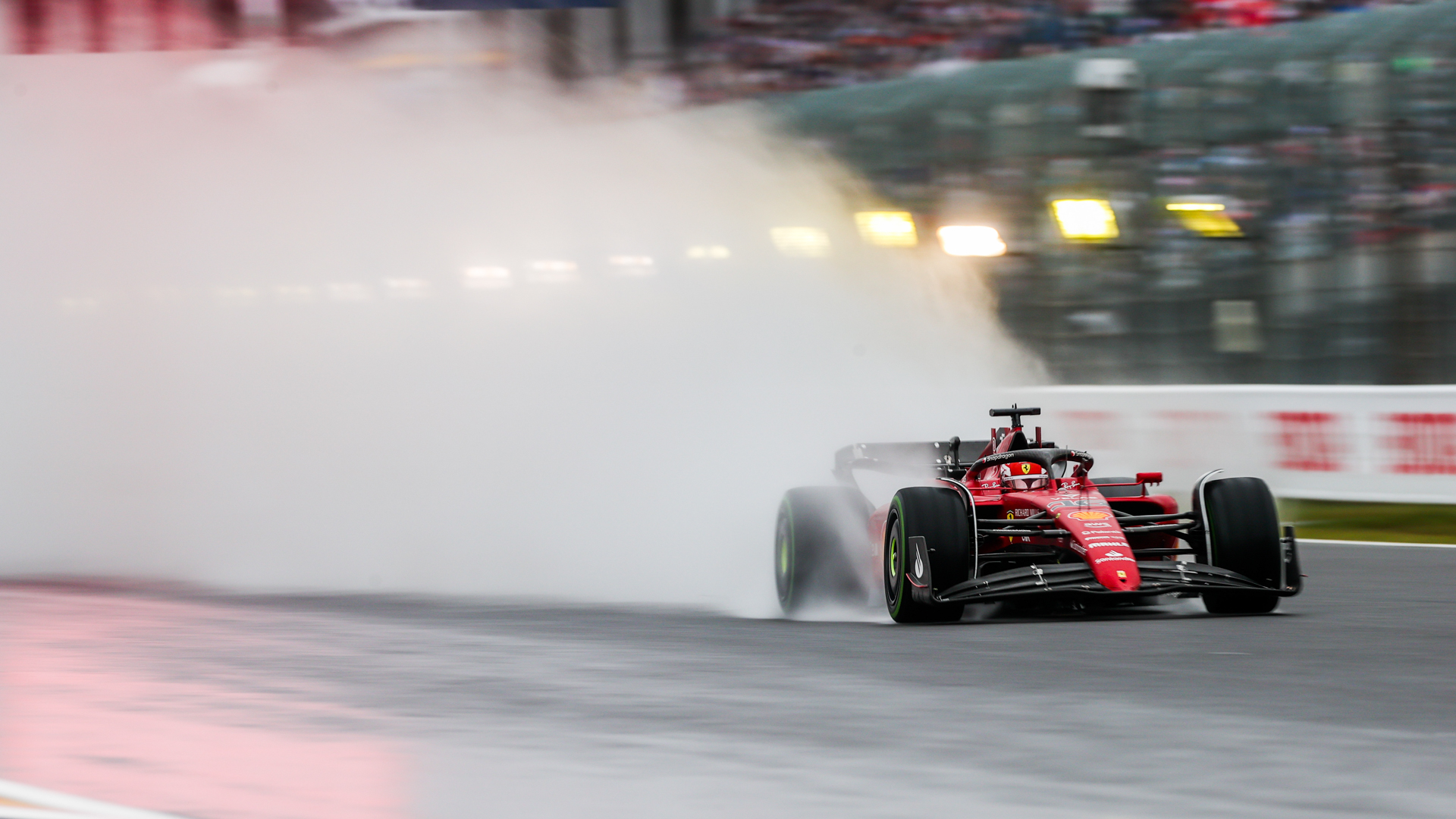

Last weekend’s F1 Suzuka grand prix in Japan left a bitter taste in the mouths of many Formula 1 fans. For one thing, Red Bull’s Max Verstappen clinched the 2022 championship title with four races still on the calendar, after an admittedly impressive grand prix victory. But it also featured a lengthy rain delay and its fair share of controversy, after AlphaTuari driver Pierre Gasly nearly collided with a tractor—which was removing Carlos Sainz’s crashed car from track—due to the lack of visibility. According to Motorsport, that incident, and the incredibly dangerous conditions, sparked F1 drivers to wonder if they should be the ones to determine if race conditions are safe, not the safety car driver.
During the several hour-long rain delay last Sunday, the FIA sent the safety car out on track to judge the conditions, as is customary. The idea is that the safety car driver will do a few laps and determine whether track conditions are safe enough to allow racing to continue. However, drivers noted that the safety car is an entirely different beast than an F1 car and can’t be used to accurately judge track conditions. There are several major reasons why the safety car—in this case a Mercedes-AMG GT 63 S 4Matic—shouldn’t be used but the most important one is its tire.

The safety car’s tires are far skinner, with a drastically different tread pattern than an F1 car’s. Combine its road-oriented tires with its lower power output and the water spray coming off the back of the safety car is basically non-existent. While the spray off the back of an F1 car might as well be a tidal wave by comparison. It completely blankets visibility for drivers behind it. So when we all saw the safety car lapping Suzuka, with almost no water spray from its tires, the racing stewards felt it was safe for F1 cars but the drivers felt otherwise.
So members of the Grand Prix Driver’s Association (GPDA) got together to come up with a different solution. Instead of having a safety car do a few easy laps, have the F1 drivers do what they’re calling “information laps” behind the safety car to determine track conditions.
The idea came from listening to Mercedes driver, and seven-time F1 champion Lewis Hamilton, who said during the rain delay that he’d be able to tell if the conditions were safe immediately in his F1 car. Not only would information laps allow drivers to determine for themselves whether it’s safe to race but they would also give the race marshals a more accurate look at the conditions. If the marshals can’t see what’s happening, because of a wall of spray, they can’t determine if there’s a crash past the marshal post and therefore can’t warn oncoming drivers.

Cars could be also fitted with certain sensors to determine visibility, adding some tangible data to the information laps. That way, drivers aren’t making subjective decisions but instead following data collected from their cars. With that data, the FIA could make more informed decisions about whether to race, rather than just watching a completely different car do some easy laps on television.
As of right now, discussions of potential information laps have only happened internally, within the GPDA. However, they intend to bring this discussion to the FIA ahead of next week’s race in Austin, Texas. There are still some wrinkles that need to be ironed out, such as how to manage fuel during information laps, but those are small issues that shouldn’t be difficult to work out.
I’m no expert but I think this is a pretty good idea. Not only does it give drivers greater control over their own safety but it provides better information and data to both the FIA and the fans watching at home. Sometimes you hear racing fans complain about drivers not wanting to race in the rain, pointing to the existence of rain tires. But unless you’re strapped into an F1 car, doing triple-digit speeds while almost completely blind, maybe you should trust the drivers’ opinions instead.